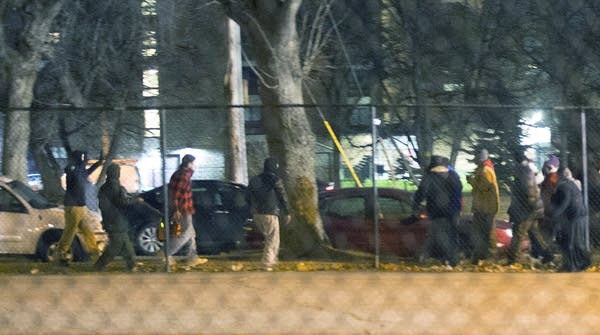Racial hatred or self-defense? Scarsella case goes to jury

Go Deeper.
Create an account or log in to save stories.
Like this?
Thanks for liking this story! We have added it to a list of your favorite stories.
There's no question Allen Scarsella shot five black men in north Minneapolis who had been protesting the police killing of Jamar Clark. But was it a crime? A jury began deliberating on Tuesday.
Prosecutors and defense attorneys finished their work Tuesday in closing remarks to the jury. Scarsella has argued he shot in self-defense on that Nov. 23, 2015 night as he and other companions were pursued by a group of men who were attending a protest near the 4th Precinct police station.
On Monday, Scarsella took the stand in his own defense saying he'd been punched in the face and accused of being a Ku Klux Klan member and shot because he feared for his life.

On Tuesday, however, Assistant Hennepin County Attorney Judith Hawley told the jury it was hatred of African-Americans that led him to pull the trigger. She'd pointed to text messages from Scarsella's phone in which he allegedly talked about "shooting black guys" and other texts containing racial slurs, including one where Scarsella talked of "tempting a chimp to chimp out so you can shoot him" in reference to black people.
Turn Up Your Support
MPR News helps you turn down the noise and build shared understanding. Turn up your support for this public resource and keep trusted journalism accessible to all.
"Isn't it exactly what he did?" Hawley asked jurors Tuesday. "He taunted protesters with a racial slur so they would 'chimp out.'"
Hawley said none of the five men shot by Scarsella were carrying weapons, despite Scarsella's claim that he'd fired at one man because he believed he'd pulled out a knife. Hawley said the men's clothes were entered into evidence so jurors could see that there were no weapons in the pockets.
Scarsella's self-defense claim doesn't hold up against state law, she added, noting that a person claiming self-defense must "avoid danger" and has "a duty to retreat ... just because you have a gun doesn't mean you can be a gunslinger."

Laura Heinrich, Scarsella's public defender, countered that Scarsella had good reason to fear for his life.
"White boy you're going to die. That's what they heard," Heinrich said of Scarsella and his companions. She said they also heard protesters yelling after them that they thought they were police or with the KKK.
Heinrich added that many of the people at the protest were furious at police for the shooting death of Clark. No matter how many times Scarsella told them to stay back, the protesters kept coming.
She noted the testimony of a man who was sitting in his car nearby the shooting scene and heard some of the protesters threaten Scarsella and Nathan Gustavsson, who'd accompanied Scarsella that night. The witness said Scarsella and Gustavsson looked scared and uncertain.

Of Scarsella's texts, Heinrich acknowledged they were "racially derogatory and hateful. But it's speech. Not action."
The state called at least 30 witnesses. The defense called eight witnesses, including Scarsella and Gustavsson. Scarsella's defense also called three Minneapolis police officers who were inside the 4th Precinct on the night of the shooting.
One of the officers described the protesters immediately in front of the building as "hostile." Video shown at trial features a few men shouting insults and sometimes profanities at the officers who were filming them. Another officer who testified said protesters got a little more excited when they saw the officers in front of the building holding their cameras.
Scarsella testified that he repeatedly told the protesters to "get back" before he fired. He said he didn't warn them that he had a gun and was ready to shoot them.
While he said he was punched by a protester, prosecutors said Scarsella's booking photo, taken the next day, didn't show any evidence he was punched, although Scarsella said he could clearly see a mark on the left side of his face.
The final jury that will decide Scarsella's guilt or innocence is made up of nine men and three women. One of the jurors is a man of color.
Correction (Jan. 31, 2017): An earlier version of this story included an incorrect day on which attorneys finished closing arguments.



